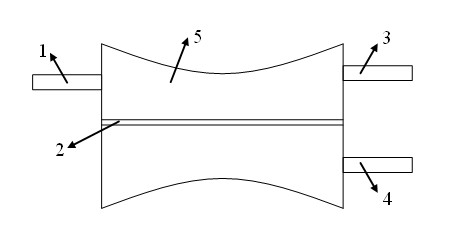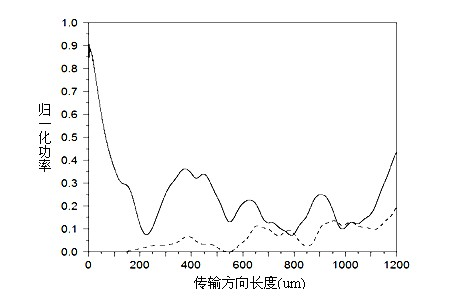Multimode interference biological chemical sensor based on silicon slot waveguides
A multi-mode interference and sensor technology, applied in the field of accurate detection of biological/chemical substances and integrated optical sensing, can solve the problems of high cost, large volume, low efficiency, etc., and achieve good manufacturing tolerance, easy integration, economical low cost effect
- Summary
- Abstract
- Description
- Claims
- Application Information
AI Technical Summary
Problems solved by technology
Method used
Image
Examples
Embodiment Construction
[0023] The principles and features of the present invention are described below in conjunction with the accompanying drawings, and the examples given are only used to explain the present invention, and are not intended to limit the scope of the present invention.
[0024] see figure 1 -6. The present invention discloses a multi-mode interference biochemical sensor based on a silicon-based grooved waveguide. The sensor includes an input waveguide 1 for inputting optical signals, two output waveguides, that is, a first output waveguide 3, and a second output waveguide. Two output waveguides 4, a multimode interference waveguide 5, the input waveguide 1, the first output waveguide 3, and the second output waveguide 4 are connected through the multimode interference waveguide 5.
[0025] The multimode interference waveguide 5 is tapered.
[0026] A single-wavelength optical signal is input from the input waveguide 1, and multi-mode interference occurs in the area of the multi-...
PUM
 Login to View More
Login to View More Abstract
Description
Claims
Application Information
 Login to View More
Login to View More - R&D
- Intellectual Property
- Life Sciences
- Materials
- Tech Scout
- Unparalleled Data Quality
- Higher Quality Content
- 60% Fewer Hallucinations
Browse by: Latest US Patents, China's latest patents, Technical Efficacy Thesaurus, Application Domain, Technology Topic, Popular Technical Reports.
© 2025 PatSnap. All rights reserved.Legal|Privacy policy|Modern Slavery Act Transparency Statement|Sitemap|About US| Contact US: help@patsnap.com



